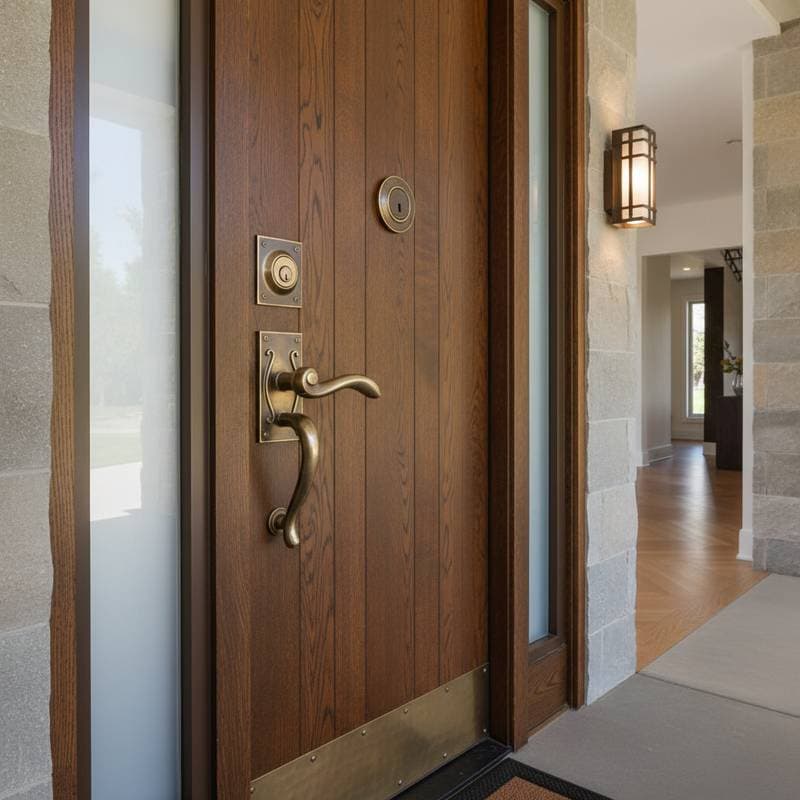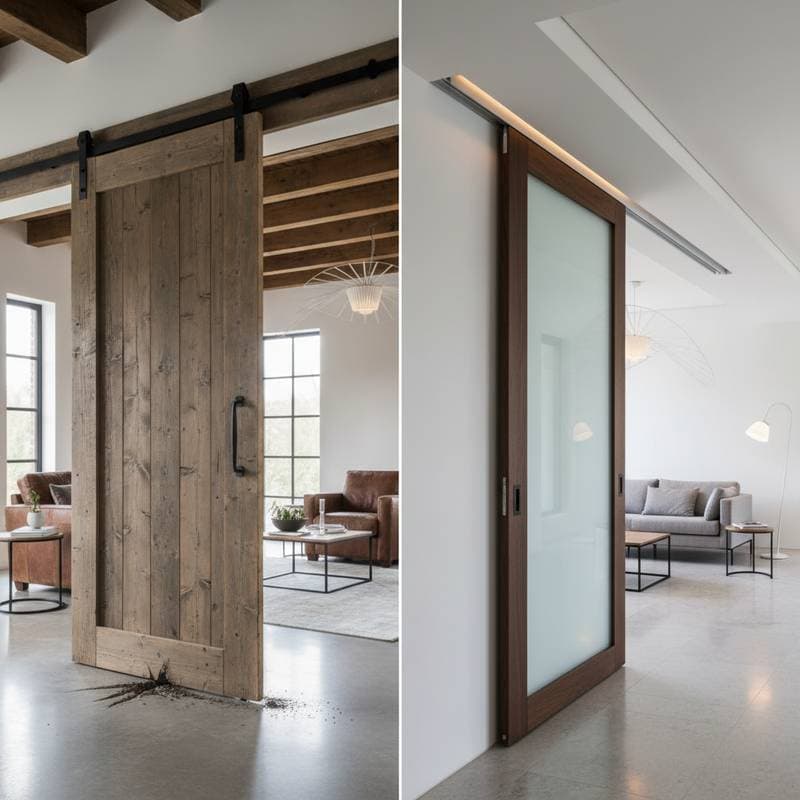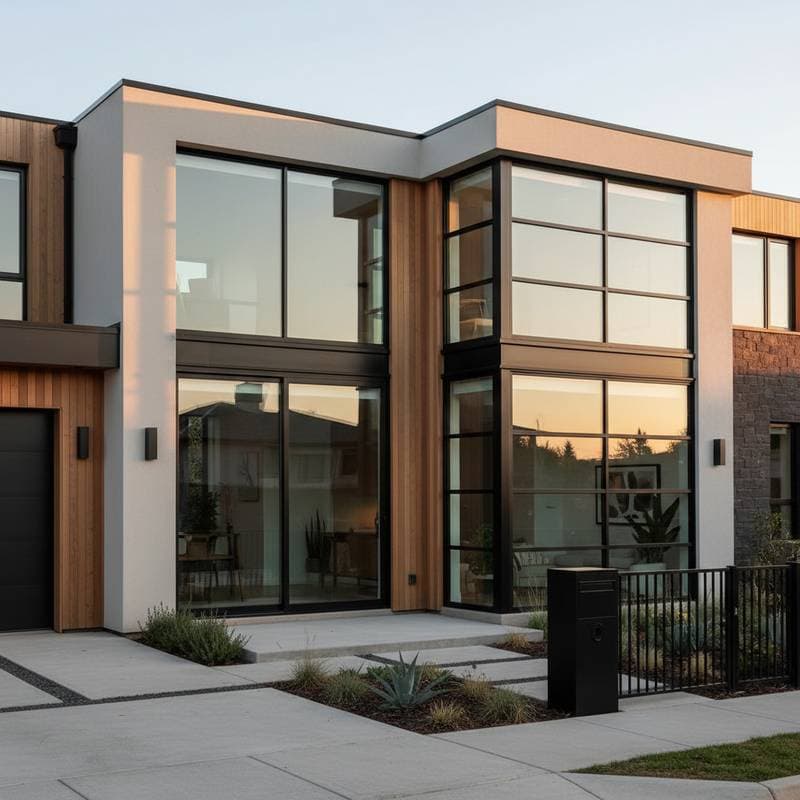Why Japandi Door Hardware Leads 2025 Interior Trends
Homeowners increasingly adopt Japandi design principles throughout their living spaces. This fusion of Japanese minimalism and Scandinavian coziness extends beyond large furnishings to essential elements such as door hardware. Clean profiles, subdued palettes, and textured surfaces in Japandi handles and pulls now shape contemporary environments. Individuals refreshing interior doors benefit from recognizing the appeal of this hardware to select enduring, cohesive options.
Core Principles of Japandi Design
Japandi merges philosophies that value restraint, skilled workmanship, and harmony with the natural world. Japanese aesthetics promote equilibrium and peace, whereas Scandinavian approaches emphasize ease and utility. Together, they yield a serene, streamlined style reliant on organic substances, soft hues, and deliberate forms. Hardware in this vein adheres to these ideals, delivering understated grace over bold ornamentation.
To illustrate, consider how a simple brass lever with subtle wood inlay evokes tranquility without overwhelming the eye. Such pieces integrate seamlessly into daily routines, enhancing the overall sense of balance in a home.
Pricing Insights for Japandi Door Hardware
Japandi levers, pulls, and knobs utilize diverse substances and treatments that affect both expense and resilience. Costs fluctuate according to substance integrity and intricacy of form. Entry-level streamlined levers begin near $40 for a set, whereas premium solid brass or steel variants ascend to $150 or higher, encompassing installation.
| Material/Finish | Cost Range (per handle set) | Key Features |
|---|---|---|
| Matte black steel | $40 to $85 | Contemporary appearance, resists fingerprints, withstands heavy use |
| Brushed brass | $70 to $140 | Subtle glow, protective layer against scratches, extended durability |
| Natural wood accent | $55 to $120 | Sustainable sourcing, artisanal texture, complements oak or similar woods |
| Satin nickel | $60 to $130 | Resists rust, adaptable to various styles, simple maintenance |
| Mixed material (wood and metal) | $80 to $150 | Distinctive blend, elevated aesthetics, robust construction |
Installation typically incurs an additional $50 to $100 per door, influenced by hardware specifications and door composition. Replacing prior fixtures often reduces labor expenses, as minimal modifications like drilling prove necessary.
For budget-conscious buyers, explore mid-range options from reputable suppliers that balance quality with affordability. Always verify compatibility with existing door mechanisms to avoid unexpected costs.
Reasons Homeowners Select Japandi Hardware
The soothing effect and perpetual elegance of Japandi draw widespread interest among residents. Interior designer Mika Tanaka of Kyoto Interiors notes that Japandi hardware fosters unity between age-old techniques and current lifestyles. She adds that residents value pieces which seem purposeful over merely ornamental. The sensory quality of textured metals and raw timbers turns each door operation into a refined encounter.
This versatility suits diverse settings, from sparse urban dwellings to countryside renovations. Neutral treatments such as matte black, brushed brass, and oak tones align effortlessly with solid wood, veneered, or coated door surfaces. Homeowners report a heightened sense of calm post-installation, as the hardware subtly unifies disparate room elements.
Emerging Trends in Materials and Finishes
Japandi hardware favors gentle matte patinas and softened contours to mimic organic forms. Glossy surfaces clash with the style's grounded serenity, so designers steer clear. Preferences lean toward warm alloys or combined elements that reflect broader home motifs.
Prominent pairings include:
- Brushed brass paired with oak for refined warmth
- Matte black enhanced by walnut for depth and variation
- Satin nickel combined with ash for sleek yet earthy appeal
Beyond aesthetics, these choices prove utilitarian. Matte treatments conceal smudges more effectively than high-shine alternatives, while wood components allow periodic reconditioning through oil application to preserve allure over years.
In 2025, anticipate innovations like sustainable composites mimicking rare woods, reducing environmental impact without sacrificing tactile satisfaction.
Key Factors Shaping Cost and Choices
Several elements determine ultimate expenses and suitability:
- Material quality: Full metals and dense woods exceed composites in price yet deliver superior endurance.
- Customization options: Bespoke patinas or manual engravings elevate costs.
- Door specifications: Substantial solid-core models demand fortified pulls or custom pivots.
- Brand prestige: Establishments such as Emtek, Sugatsune, and Formani command premiums for superior build and guarantees.
Contractor James O’Leary of Modern Doorworks advises prioritizing utility alongside appearance. “Hardware is something you touch every day,” he states. “The fit, feel, and performance matter just as much as the design.” This equilibrium embodies Japandi's core tenets.
When evaluating options, test samples in person to assess weight and grip, ensuring they align with household needs like accessibility for children or elders.
Ideal Applications for Japandi Hardware
This hardware excels in environments built on neutral schemes and organic textures. It harmonizes particularly well with:
- White oak or ash paneling
- Soft fabric or tonal wall coverings
- Streamlined architectures with minimal adornment
In liminal areas such as corridors or studies, it imparts discreet refinement. For moisture-prone zones like kitchens or baths, opt for resilient variants including brushed nickel or sealed brass to ensure lasting performance.
Even in eclectic homes, Japandi pieces serve as anchors, bridging modern and vintage components without dominating the narrative.
Installation: DIY or Expert Assistance
Numerous Japandi fixtures align with conventional door preparations, appealing to skilled self-installers. Yet, enlisting professionals suits complex items or multi-door projects. Experts guarantee precise positioning, smooth latching, and firm attachment, all vital for sustained reliability.
DIY enthusiasts should gather tools like screwdrivers, levels, and templates in advance. Tutorials from manufacturer sites provide step-by-step guidance, often reducing errors and time.
Care Tips for Enduring Appeal
Crafted to develop patina naturally, Japandi hardware requires minimal upkeep. Wipe with gentle soap solution and soft cloth to sustain surfaces. Steer away from harsh abrasives that erode finishes. Timber elements benefit from seasonal oil treatments in damp climates to prevent drying.
With consistent attention, superior examples endure for generations, evolving alongside the home while retaining sensory and visual charm.
Integrating Japandi Hardware for Lasting Impact
When modernizing interior doors, Japandi hardware offers an elegant enhancement blending novelty with permanence. Begin by matching patinas to floors, storage, and illumination for cohesive flow. Select ergonomic forms that render routine tasks mindful and pleasurable.
For those pursuing serene, equilibrated homes, this hardware unites practicality with artistry. Such understated upgrades profoundly shape daily ambiance, fostering environments of quiet intention.






